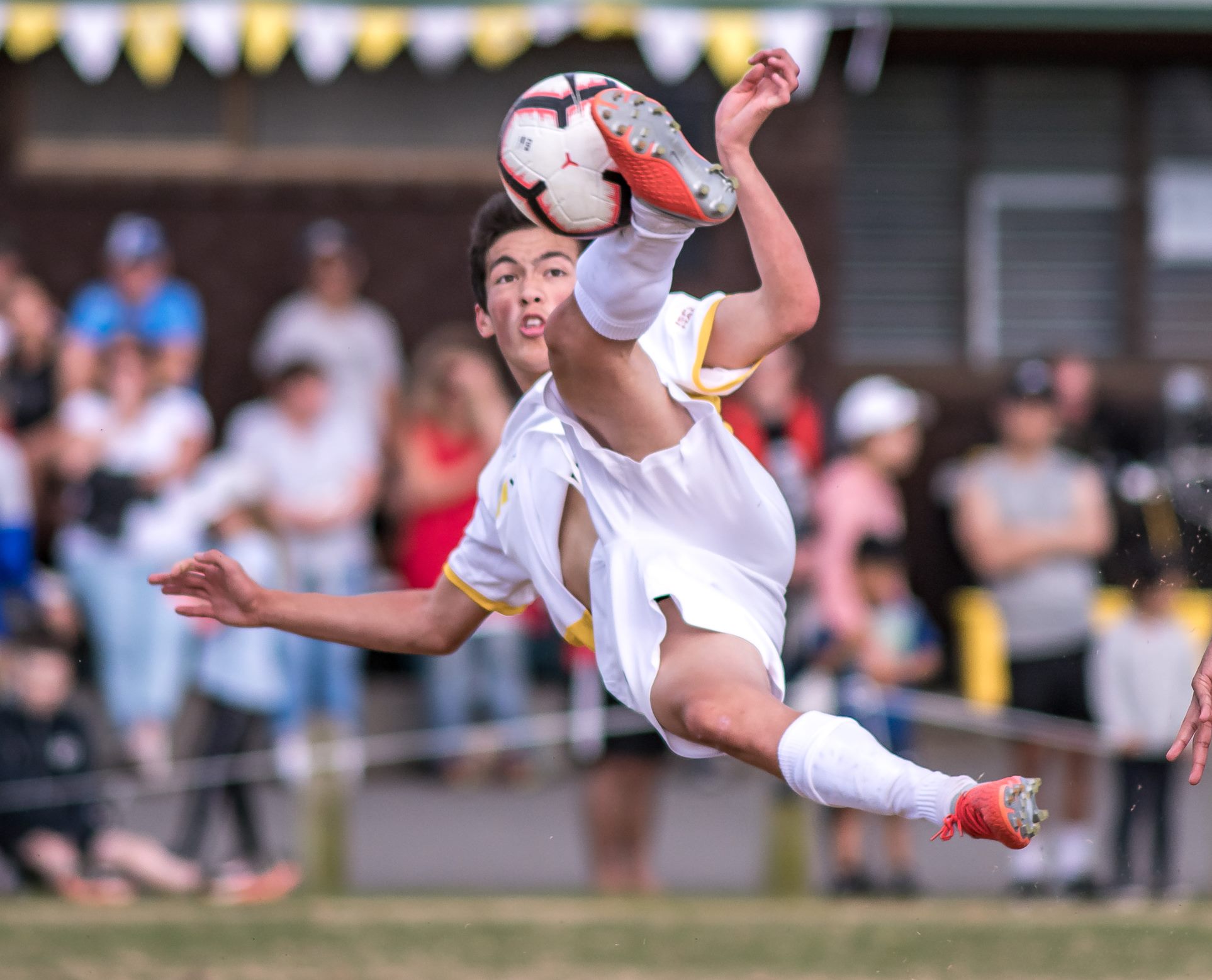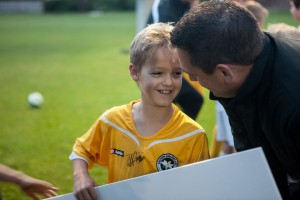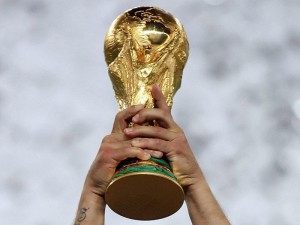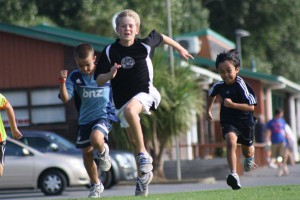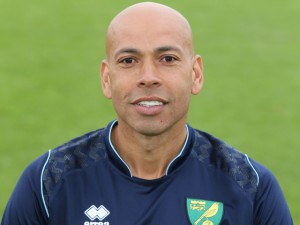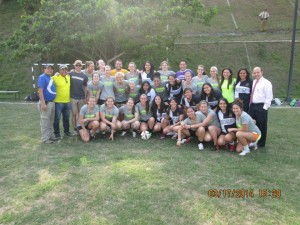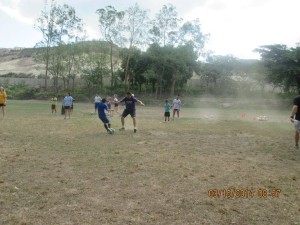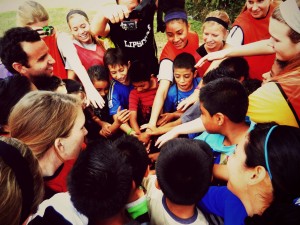ISPS HANDA PREMIERSHIP ROUND 2
EASTERN SUBURBS v WELLINGTON PHOENIX RESERVES
RIVERHILLS PARK – SATURDAY 27TH OCTOBER 2018
A blustery afternoon greeted both Eastern Suburbs and Wellington Phoenix as they made their way onto Riverhills Park, Pakuranga, to play their ISPS Handa Premiership Round 2 game.
Suburbs were playing their first game in their new home for the 2018/19 season, after moving away from Bill McKinlay Reserve, the change also meant a change in playing surface from artificial turf to grass for the season.
Suburbs came into the game following a crushing 5-0 win in their opening game at home to Hawkes Bay, and would be looking to continue their scoring mode, whereas Wellington Phoenix were looking to bounce back following a opening day defeat in the Wellington Derby in their opening game, in which they leaked 3 second half goals in a 4-1 defeat.
The scene was set for a great game, but would the teams oblige, only time and 90 minutes of football were standing in the way.
The game kicked off with a couple of lusty tackles, which the referee correctly said to play on, and immediately it appeared as if the wind could potentially be a factor in the game.
Apart from the tackles in the opening 5 minutes there wasn’t much to report.
However, things were soon to change when Suburbs won a corner, from which the ball made it way out to Kingsley Sinclair and his half volley was expertly saved by Zac Jones in goal for the Phoenix, and tipped over for another corner.
But when the next corner was floated over by Dominic Wooldridge, Jones flapped at it, and the wind took it beyond him and into the back of the next, much to the delight of the Suburbs players who ran to the corner to celebrate the goal with Wooldridge.
Suburbs were quick of the blocks and Wellington Phoenix potentially already had a mountain to climb.
1-0 to Eastern Suburbs
Following the goal, the game began to ebb and flow between both penalty spots, without many clear-cut chances, or saves by either keeper.
That was until a rather inconspicuous passing play from Suburbs after 25 minutes saw Andre De Jong receive a pass from Elijah Wood, which saw him on the edge of the 18 yards box, with what seemed like 10 yards of space, if not more, and without too much bravado slotted the ball past Zac Jones, and then raised his hand to celebrate a well taken goal, before he was mobbed by his team mates.
2-0 to Eastern Suburbs
Following Suburbs second goal, Wellington Phoenix started to find their feet, and just after the half hour mark of the game, they got into a rhythm with the ball, that saw them keep possession for long periods of time, which caused Suburbs to drop deep in order to defend and keep the Phoenix from having any goal scoring opportunities.
Suburbs for this period, which was about five minutes, despite working with minimal possession, kept the Phoenix out of their 18-yard box, and consequently shot less during this period.
Tackles were still coming in strong, and the referee to his credit kept the play, and consequently the ball moving, which meant the game flowed between both teams 18 yard boxes.
Suburbs with time up in the first half, had a great chance of score, when De Jong found Mohamed Awad, and despite getting a lot behind his shot, Jones for Wellington was able to get his hands up quick enough to punch the ball away and keep the score at 2-0.
Shortly after this chance, the referee blew for half time, and both teams made their way to their respective changing rooms to work on their plans for the second half.
Suburbs with a 2-0 lead would have been the happier of the two teams, but would be playing into the strong wind in the 2nd half, so Wellington Phoenix had it all play for.
HALF TIME: EASTERN SUBURBS 2: 0 WELLINGTON PHOENIX RESERVES
The second half kicked off with a single change, that being for Wellington Phoenix with Boyd Curry replacing Noah Tipene-Clegg.
Phoenix started the second half more brightly than the first, and they seemed to have become more at home with the wind and weather.
They almost immediately starting spreading the play, and looking to get crosses into the box from wide area, however when Suburbs did get their hands on the ball and look to attack, a tug on the shirt by the Phoenix’s Callan Elliot, saw him become the first name in the referee’s notebook for the game.
After this initial yellow card, Wellington Phoenix slightly lost their composure and two further players found their name in Allan Wilson’s notebook in a short space of time, those players being Reuben Way and Boyd Curry.
In amongst the yellow cards was Wellington Phoenix’s best chance of the game with a shot by Benjamin Waine being saved low to his right by Andrew Withers in his first real involvement in the game.
Andre De Jong then missed his chance to put the game out of the visitors reach, when a long an probing cross found him in acres of space in the box, but his header, whilst directed down and away from the keeper, was directed in such a manner that it ended up bouncing over the crossbar, when Jones was stranded in the Phoenix goal.
Two substitutions took place in short succession, with Maximillian Batchelor replacing Tacettin Kumsuz for the Phoenix, and Jack Duncan making way for Alexander Clayton for the home side.
The substitutions bookended a 4th yellow card for the visitors, this card being given to the Phoenix captain Samuel Sutton for a meaty challenge on half way.
Following this yellow card, the clouds opened above the ground, which actually made the playing surface better for both teams, however the spectacle for those watching was diminished due to people scurrying for cover to keep themselves dry.
Despite the playing surface being better to play on, the chance in the final quarter of the game were few and far between, with the game being fought through the middle of the park.
Both teams made late substitutions with Owen Smith replacing Benjamin Waine for Wellington Phoenix and Tinashe Marowa coming on for Kingsley Sinclair for Suburbs.
The 4th official held up his sign for 4 minutes of additional time to be played, which spurred on the visitors for one last push to get something out of the game, however despite forcing a number of corners and a save out of Whithers in goal, they were able to breach the goal and the referee blew for full time.
Suburbs were able to continue their great start to the season, yet to concede a goal in their opening two game.
For Wellington Phoenix they leave Auckland empty handed, and now must regroup for their next fixture.
FULL TIME: EASTERN SUBURBS 2 : 0 WELLINGTON PHOENIX RESERVES
MATCH INFO
ISPS HANDA Premiership 2018/19
Round 2
Saturday 27th October 2018
Riverhills Park, Pakuranga, Auckland
Eastern Suburbs AFC 2 : 0 Wellington Phoenix
(Half Time: Eastern Suburbs 2 : 0 Wellington Phoenix)
ESAFC: Wooldridge (6’), De Jong (25’)
WP:
Yellow Cards
ESAFC:
WP: Elliot (51’), Way (54’), Curry (59’), Sutton (73’)
Red Cards
ESAFC:
WP:
EASTERN SUBURBS
1. Andrew WITHERS (GK)
4. Nando (Nando) PIJNAKER
7. Timothy PAYNE ©
10. Andre (Andre) DE JONG
11. Mohamed AWAD
12. Kingsley SINCLAIR (19. Tinashe MAROWA, 86’)
14. Elijah JUST
15. Dalton WILKINS
16. Dominic WOOLDRIDGE
23. Campbell STRONG
24. Jack DUNCAN (2. Alexander Clayton, 74’)
SUBS NOT USED
30. Justin BIEGA (GK)
3. Kelvin KALUA
18. Patryk MISIK
Coach: Danny Hay
WELLINGTON PHOENIX RESERVES
1. Zac JONES (GK)
3. Reuben WAY
4. Liam MOORE
6. Gianni STENSNESS
7. Callan ELLIOT
8. Tacettin KUMSUZ (19. Maximilian BATCHELOR, 72’)
9. Calvin HARRIS
11. Samuel SUTTON
13. Noah TIPENE-CLEGG (2. Boyd CURRY, 46’)
15. Michal KOPCZYNSKI
17. Benjamin WAINE (21. Owen SMITH, 81’)
SUBS NOT USED
40. Alexander PAULSEN
16. Ronan WYNNE
Match Officials
Referee: Allan WILSON (NZL)
Assistant referee 1: Mazhar BATOOR (NZL)
Assistant referee 2: Reza AL RABEA (NZL)
4th official: Cory MILLS (NZL)

